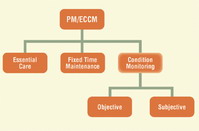 Article written by Torbjörn Idhammar VP and Partner, IDCON, Inc., a maintenance management consulting and training company.Further information is available by contacting This email address is being protected from spambots. You need JavaScript enabled to view it.
Article written by Torbjörn Idhammar VP and Partner, IDCON, Inc., a maintenance management consulting and training company.Further information is available by contacting This email address is being protected from spambots. You need JavaScript enabled to view it.
Visiting plants in different corners of the world, we often are asked:
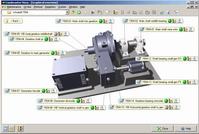 If you want to change your current maintenance reality, you must begin with the basics. One of the cornerstones of a successful maintenance effort is the precise execution of thoughtful, well-written preventive maintenance (PM) procedures. There are several steps that must be followed to ensure that these procedures are as effective as possible.
If you want to change your current maintenance reality, you must begin with the basics. One of the cornerstones of a successful maintenance effort is the precise execution of thoughtful, well-written preventive maintenance (PM) procedures. There are several steps that must be followed to ensure that these procedures are as effective as possible.
Step #1: Assessment The first step in the development of an effective PM procedure is to determine the condition of the machine or machine center. You have to know where you are before you can decide where you want to go and how you intend to get there. If the machine is newer equipment, this evaluation should be fairly straightforward. If, however, you are dealing with equipment that has been in service for a period of time or has a history of unreliability, this assessment could be quite a lengthy undertaking. Still, it
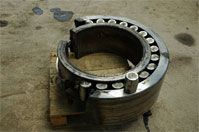 By carrying out regular condition monitoring checks on critical rotating plant and machinery, Corus Northern Engineering Services (CNES), the maintenance, condition monitoring and engineering services company within Corus Group, has helped a limestone quarry in Cumbria maintain its output, efficiency and profitability.
By carrying out regular condition monitoring checks on critical rotating plant and machinery, Corus Northern Engineering Services (CNES), the maintenance, condition monitoring and engineering services company within Corus Group, has helped a limestone quarry in Cumbria maintain its output, efficiency and profitability.
CNES
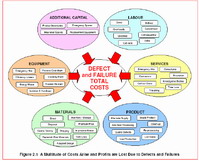 The Huge Instantaneous Impact on Your Business of Defect Cost and Failure Cost. When a failure incident occurs there is a consequential loss of profits and a massing of costs. The cost of failure includes lost profit, the cost of the repair, the fixed and variable operating costs wasted during the downtime and a myriad of consequential costs that reverberate and surge through the business. These are all paid for by the organisation and seen as poor financial performance. The costs of failure cannot be escaped and are counted in millions of dollars of lost profit per year. Total defect and failure true costs are not normally recognised by managers, yet they can send businesses bankrupt. In the instance of a failure all its costs and losses are automatically incurred on the business. These costs can only be prevented by precluding the failure in the first place. This article explains the 'instantaneous cost of failure' (ICOF) and introduces a proactive technique, 'Defect and Failure True Costing', that adds economics to RCM and FMEA to help companies recognise and prevent this tremendous waste of money.
The Huge Instantaneous Impact on Your Business of Defect Cost and Failure Cost. When a failure incident occurs there is a consequential loss of profits and a massing of costs. The cost of failure includes lost profit, the cost of the repair, the fixed and variable operating costs wasted during the downtime and a myriad of consequential costs that reverberate and surge through the business. These are all paid for by the organisation and seen as poor financial performance. The costs of failure cannot be escaped and are counted in millions of dollars of lost profit per year. Total defect and failure true costs are not normally recognised by managers, yet they can send businesses bankrupt. In the instance of a failure all its costs and losses are automatically incurred on the business. These costs can only be prevented by precluding the failure in the first place. This article explains the 'instantaneous cost of failure' (ICOF) and introduces a proactive technique, 'Defect and Failure True Costing', that adds economics to RCM and FMEA to help companies recognise and prevent this tremendous waste of money.
The Cost of Failure to a Business
When a business operates it expends fixed and variable costs to make a product which it sells for a profit. Figure 1 is graphical representations of a business in operation. The business produces a product that requires an input of costs which it sells to pay for them and make a profit.
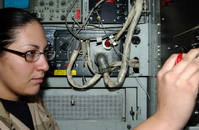 Reliability Centered Maintenance has changed the way we think about Preventive Maintenance (PM). It has caused some to question whether it is even necessary to do preventive maintenance. The truth is most manufacturing facilities would benefit from a good preventive maintenance program. It would be especially beneficial for those plants that rely on breakdown or run-to-failure maintenance. But, a preventive maintenance program is potentially risky, so it must be administered and performed properly to be successful. This paper will examine both the benefits and risks of preventive maintenance and offer some ideas on how to make it successful. We will start with a definition of preventive maintenance.
Reliability Centered Maintenance has changed the way we think about Preventive Maintenance (PM). It has caused some to question whether it is even necessary to do preventive maintenance. The truth is most manufacturing facilities would benefit from a good preventive maintenance program. It would be especially beneficial for those plants that rely on breakdown or run-to-failure maintenance. But, a preventive maintenance program is potentially risky, so it must be administered and performed properly to be successful. This paper will examine both the benefits and risks of preventive maintenance and offer some ideas on how to make it successful. We will start with a definition of preventive maintenance.
What is Preventive Maintenance?
Preventive maintenance is planned maintenance of plant and equipment that is designed to improve equipment life and avoid any unplanned maintenance activity. PM includes painting, lubrication, cleaning, adjusting, and minor component replacement to extend the life of equipment and facilities. Its purpose is to minimize breakdowns and excessive depreciation. Neither equipment nor facilities should be allowed to go to the breaking point. In its simplest form, preventive maintenance can be compared to the service schedule for an automobile.
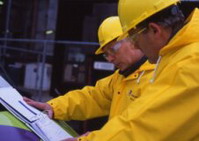 What constitutes adequate PM frequency in your plant? How do you know when enough is enough? Where do you want your PM program to take you? Think before answering. No guessing allowed.
What constitutes adequate PM frequency in your plant? How do you know when enough is enough? Where do you want your PM program to take you? Think before answering. No guessing allowed.
When establishing an effective maintenance program, one must determine not only which preventive maintenance (PM) routines to accomplish, but how often they should be done. On the surface, the answer to this question would seem to be quite simple. Is it really?
One proven theory is that the PM to corrective maintenance (CM) work order ratio should be about 6 to 1. This theory assumes that PM inspections reveal some type of corrective work that should be completed on an asset on average every six times it is performed. The assumption is that, if the ratio is greater than 6:1, you are performing the PM too often; if the ratio is less than 6:1, you are not performing it often enough. (The "6 to 1 Rule" was proven by John Day, Jr., manager of Engineering and Maintenance at Alumax of South Carolina, during the period when Alumax of South Carolina was certified as the first "World-Class" maintenance organization.) You might accept this theory, put it in place in your Maintenance program and forget about reading the remainder of this article. Or, you might choose to continue reading, as we attempt to prove or disprove this theory.
Hosokawa Micron Ltd are now able to offer HEPA Filter Integrity Tests either as a specific task or as part of a planned maintenance programme.
Industry recommends that HEPA filters be checked at 14 month intervals or less or immediately after filter change. This is because where high efficiency filters are fitted, it is important that the filter housing/sealing device does not allow particulate material to pass and therefore compromise the classification of the controlled environment installation that is being served.
The Filter Integrity Test is commonly referred to as a DOP test because the original smoke used in the test was generated using Di-Octyl Phthalate. This chemical was found to have carcinogenic properties and was subsequently substituted by a mineral oil, Shell Ondina EL. The smoke generated from this has identical characteristics and the term DOP testing remains, although it is now understood to mean
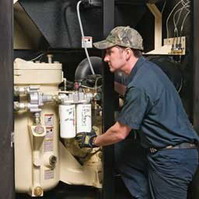 Introduction
Introduction
The traditional approach to maintaining mobile equipment - based on fixed interval component replacements and overhauls - is rapidly dying. In its place is a new framework for maintaining this equipment using Condition Based Maintenance approaches, and which focuses strongly on the consequences of failure.
At the heart of this new approach lies a strategic tool for determining the most appropriate Maintenance strategy for key items of Mobile Equipment, and their major components - Reliability Centred Maintenance.
What is Reliability Centred Maintenance?
Reliability Centred Maintenance originated in the Airline industry in the 1960's. By the late 1950's, the cost of Maintenance activities in this industry had become high enough to warrant a special investigation into the effectiveness of those activities. At the same time, the Federal Aviation Agency (FAA) in the US was becoming increasingly frustrated by its experiences showing that it was not possible to control the failure rate of certain types of engines by changing either the frequency or content of scheduled fixed-interval overhauls.
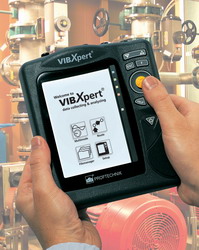 PRÜFTECHNIK, the vibration analysis specialists have introduced a new FFT analyzer and data collector to their range of condition monitoring systems.
PRÜFTECHNIK, the vibration analysis specialists have introduced a new FFT analyzer and data collector to their range of condition monitoring systems.
According to the company this new addition uses the latest microchip technology to make the system one of the fastest FFT analyzers on the market.
Other innovations such as an automatic light sensitive keyboard and high resolution backlit screen for easy viewing in any light conditions, long battery life, 102,400 lines of resolution and massive on board memory capability which is upgradeable to 1 gigabyte ensures that the VIBXPERT will be a major addition to the condition monitoring market.
The system measures and records all forms of machine vibrations, bearing condition, as well as process and inspection data. For the diagnosis of complex vibration conditions VIBXPERT provides comprehensive analysis functions such as order spectrum, cepstrum, orbit, phase, cross phase analysis and coast down measurement.
